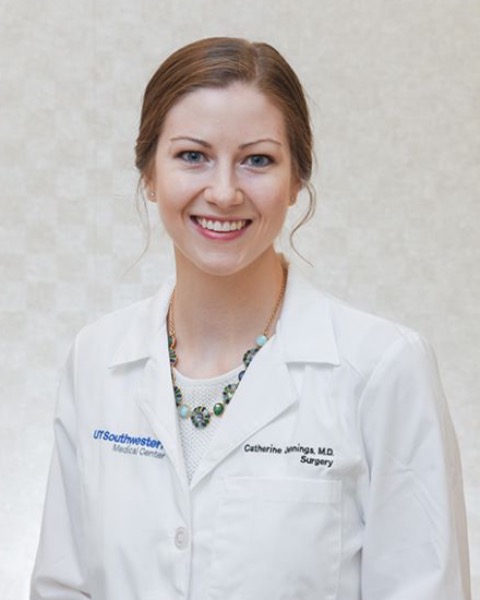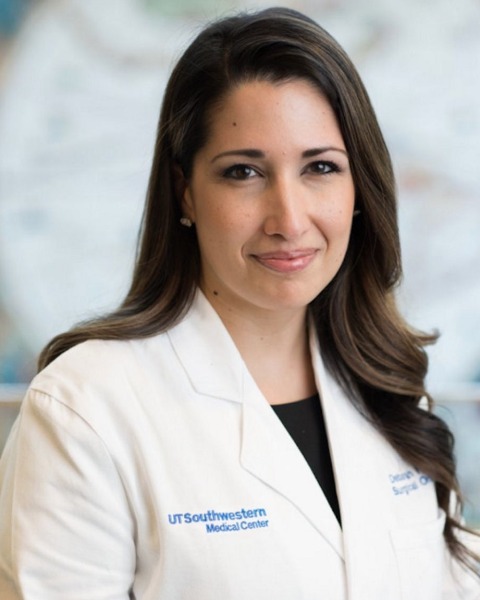Breast
E88: CHEK2 Mutation and Breast Cancer: A retrospective review of management and surveillance compliance

Catherine Jennings, MD
Breast Fellow
UT Southwestern
Dallas, Texas, United States
Catherine Jennings, MD
Breast Fellow
UT Southwestern
Dallas, Texas, United States
Catherine Jennings, MD
Breast Fellow
UT Southwestern
Dallas, Texas, United States- FF
Fedra Fallahian, MD
Breast Fellow
UT Southwestern, United States - RW
Rachel Wooldridge, MD
Breast Surgical Oncologist
UT Southwestern, United States 
Deborah E. Farr, MD
Breast Surgical Oncologist
UT Southwestern
Dallas, Texas, United States- AF
Anthony Froix, MD
Breast Surgical Oncologist
UT Ssouthwestern, United States - SS
Stephanie Serres, MD, PhD
Breast Surgical Oncologist
UT Southwestern, United States - AN
Anvy Nguyen, MD
Breast Surgical Oncologist
UT Southwestern, United States - SZ
Shruti Zaveri, MD
Breast Surgical Oncologist
UT Southwestern, United States - ML
Melanie Lopez, BA
Medical Student
UT Southwestern, United States - SF
Sacha Finn, MD
General Surgery Resident
UT Southwestern, United States - ML
Marilyn Leitch, MD
Breast Surgical Oncologist
UT Southwestern, United States
ePoster Abstract Author(s)
Submitter(s)
Author(s)
CHEK 2, or Checkpoint Kinase 2, is a protein that plays an integral role in the cell cycle, leading to cell apoptosis when DNA damage is recognized. A monoallelic mutation in CHEK2 increases the risk of developing breast cancer by 23-48%. The risk of developing a second primary within 10 years of the first breast cancer diagnosis can be up to 29%. Current NCCN guidelines for this population recommend high-risk screening with a bilateral breast MRI alternating with a mammogram every 6 months. We sought to study our population of CHEK2 pathogenic mutation carriers, evaluating management and screening compliance, with the goal of improving our treatment and counseling of these patients.
Methods:
A retrospective chart review was performed, using our database of patients with known genetic mutations. In our group of 583 CHEK2 positive patients, we included only females with the known pathogenic variants 110delC and c.707T >C. This encompassed 217 patients. 34 of these were lost to follow-up, and one had a diagnosis too recent to be included. Data was collected on 183 patients, including screening compliance, cancer status, and treatment. Follow-up of the non-cancer group ranged from 15 months to 10 years.
Results:
108 patients were identified with CHEK2 mutation with no history of cancer. Of these, 9 (8%) had bilateral risk reducing mastectomies. One of these patients also had a BRCA2 mutation.
6 (6%) of the remaining 99 patients with no cancer diagnosis and no risk reducing surgery were compliant with the screening recommendations of MRI/mammogram annually, 6 months apart. 15 (15%) were partially compliant. We defined partial compliance as MRI or mammogram obtained between 6-11 months apart from one another.
Out of the 74 patients with cancer, only one of them had testing prior to a cancer diagnosis. 30 (41%) of these patients with cancer underwent bilateral mastectomy for risk reduction. Out of the 26 patients who underwent breast conserving surgery, 8 (31%) had a CHEK2 mutation identified preoperatively.
Conclusions:
We found that a significant portion of breast cancer patients with a CHEK2 mutation did not undergo risk reducing surgery. Very few women with a CHEK2 mutation and no cancer diagnosis were compliant with the enhanced screening recommendations. Our next step is to develop effective strategies to improve our education of these patients, stressing the importance of proper high-risk screening, and the benefit of risk reducing surgery at the time of cancer diagnosis.
Learning Objectives:
- Demonstrate appropriate knowledge of the NCCN guidelines for patients with a CHEK 2 mutation
- Understand the importance of educating patients with a CHEK2 mutation and a diagnosis of cancer about the benefits of a risk reducing surgery
- Describe the level of compliance with enhanced screening of our patients with CHEK2 mutations and no cancer diagnosis
